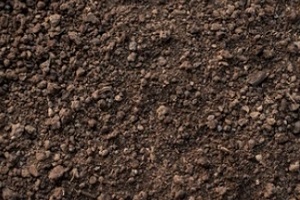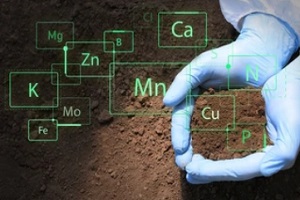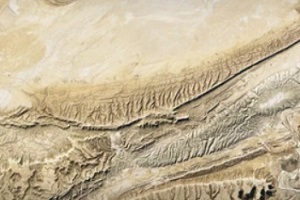 Soil, the thin layer of material that covers the planet’s surface, provides the plants we eat with a growth medium and nutrients. Most living things found on land rely on it to live and thrive.
Soil, the thin layer of material that covers the planet’s surface, provides the plants we eat with a growth medium and nutrients. Most living things found on land rely on it to live and thrive.
How is this valuable resource created and what influences the formation? Soil is largely made from the weathering of rocks. This is a natural process, but other natural processes can damage soil or wash or blow it away. It is important to understand the process of soil formation and what factors influence this essential material.
Understanding Soil
As soil develops, its profile will contain layers, or horizons. Most soil profiles can be divided into two main categories: topsoil and subsoil. The horizons are the layers found within the soil as you work your way down the soil profile. Soil horizons can be quite obvious in some cases, while others may be more difficult to distinguish.
Here is a look at the main horizons found in most soils.
A Horizon
In the A horizon, you will find humus-rich topsoil. This layer is typically darker than the other horizons in soil thanks to the high presence of organic materials. In this layer, the soil’s biological activity, organic matter, and nutrients are highest, which means that insects, earthworms, microorganisms and plant roots are most active here.
B Horizon
In the B horizon, you will find a subsoil that is rich in clay. This horizon tends to be less fertile than the A horizon, but it is capable of retaining more moisture. Compared to the A horizon, its texture is often heavier and its color is typically lighter. It also contains less biological activity than the A horizon.
C Horizon
The C horizon contains the underlying weathered rock from which the B and A horizons have been formed.
O Horizon
Some soils may also contain an O horizon made of plant matter that is accumulated on the surface of the soil.
The properties of a soil’s horizons are used to distinguish it from other soils and help to determine how the land can be reasonably used.
What Is Soil Made Of?
 Soil is made up of minerals, air and water, although the percentages of each vary. However, the bulk of soil is composed of minerals such as clay, sand, silt, stones and gravel. These minerals give soil its texture and make up the visible part of soil.
Soil is made up of minerals, air and water, although the percentages of each vary. However, the bulk of soil is composed of minerals such as clay, sand, silt, stones and gravel. These minerals give soil its texture and make up the visible part of soil.
Soil also contains pores that are filled with air, which allow plants to grow and enable the survival of living organisms within the soil. Soil is made up of roughly 25 percent water, but this varies depending on weather conditions and the soil’s water retention capabilities. Finally, around 5 percent of soil is organic matter, or humus, which is made up of dead plants and microorganisms.
How Is Soil Formed?
Soil is constantly yet slowly being formed by the gradual breakdown of rocks by weathering. The type of weathering that can cause soil to form may be chemical, physical or biological.
Chemical Weathering
In chemical weathering, rocks are broken down as a result of changes in their chemical makeup. This may happen, for example, when minerals within a rock react to air, water or other chemicals around them.
Physical Weathering
Physical weathering is one of the most common influences on soil formation. It occurs when a mechanical action breaks down rocks. This may be due to abrasion, which is when rocks collide with one another; frost; or other temperature changes that cause rocks to break down.
Biological Weathering
Rocks can also be broken down slowly by living things. For example, burrowing animals may help water and air work its way into rocks. Another example can be seen when plant roots grow into the cracks of a rock and cause it to split.
Factors That Impact Soil Formation
Here is a look at some of the factors influencing the formation of soil.
Parent Materials
Soil is generally made up of weathered rock, and the type of rock it came from can influence the composition of the soil. For example, sedimentary and igneous rocks will create very different types of soil. Rocks containing feldspar will break down into a clay-like soil because its mineral silicates have a low resistance to weathering, while soil formed by weathered granite is sandy thanks to its high resistance to weathering, which causes it to break down into gritty particles.
Climate
Climate is one of the biggest factors in determining the formation of soil. Rainfall is one major factor as the water from rain supports both chemical and physical weathering. On the other hand, areas that experience lower amounts of rainfall tend to form soil that is more alkaline because calcium carbonates can build up in the soil’s upper layers due to a lack of leaching.
In areas with heavy rainfall, soil is more susceptible to weathering, erosion and leaching. Soils in these areas are generally more acidic thanks to minerals such as calcium, magnesium and potassium being replaced by the hydrogen atoms of rainwater.
Weathering takes place more quickly in warmer temperatures as plants and microbes flourish in the heat, while colder climates that are less welcoming to microbial activities and plants tend to see more gradual rock weathering.
Time
A soil’s properties also depend on how long it has been weathered. Soil that has been exposed to soil-forming factors for a longer time will be more developed and complex than newer soil.
Topography
 Another factor that influences soil formation is the shape of the surface of the earth. In steep land, erosion from water and wind is more common, and this causes rock sediments to move and rock minerals to be washed downward toward valleys. As a result, soils in valleys are usually richer in organic material, more fertile and darker in color. Soil on hilltops, in contrast, is generally more eroded and less fertile and favorable to plant growth.
Another factor that influences soil formation is the shape of the surface of the earth. In steep land, erosion from water and wind is more common, and this causes rock sediments to move and rock minerals to be washed downward toward valleys. As a result, soils in valleys are usually richer in organic material, more fertile and darker in color. Soil on hilltops, in contrast, is generally more eroded and less fertile and favorable to plant growth.
Get in Touch With the Soil Experts at Dirt Connections
Get in touch with Dirt Connections for all of your Northern Virginia soil needs. We can deliver high-quality fill dirt and gardening soil throughout the region and answer all of your questions about the right soil for each project.
Summary

Dirt Connections was started with one goal in mind: providing quality residential and commercial construction services to clients on time and on budget. Reach out for more information on how we can support your next project.
For your convenience our estimates are free and by appointment. Call 703-940-9949 for a free estimate today!









































